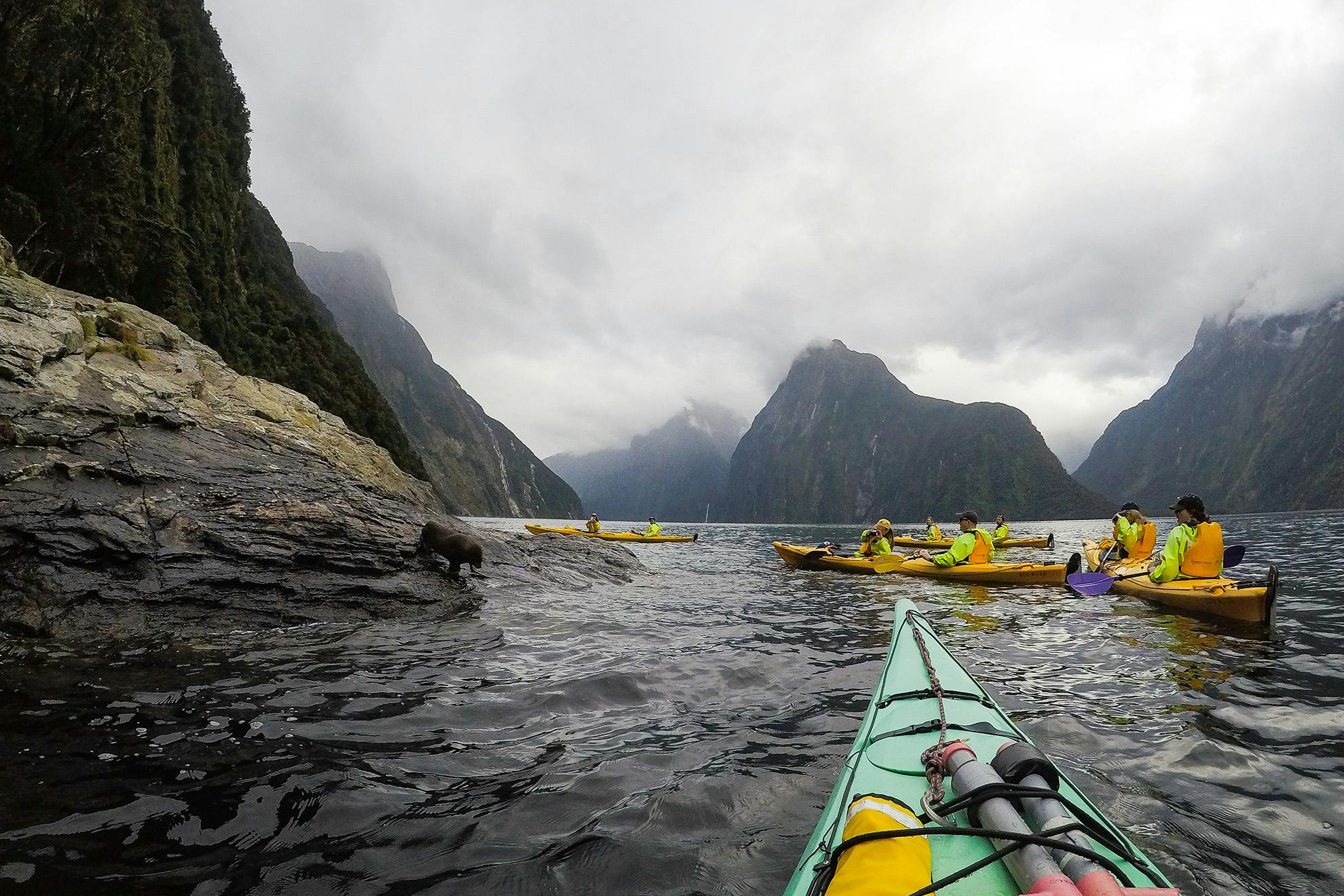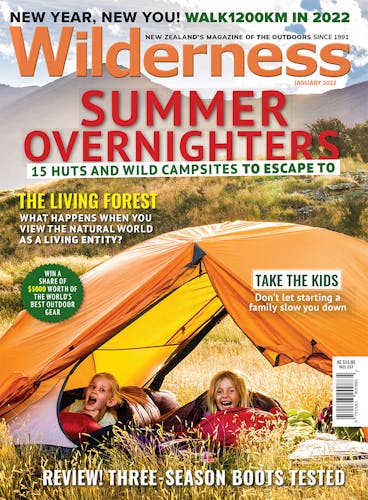There’s much to see from a sea kayak that can’t be viewed on land. Blake Hornblow paddles five locations where wildlife is a major drawcard
The unique thing about sea kayaking is being able to conceal yourself in the landscape. Paddling can be silent and the kayak will glide through the water leaving only small ripples behind. And, once on the water, there’s much to see that can’t be seen from shore.
It’s not uncommon to see kina, sea cucumbers, pāua and starfish on the rocks below or to have a curious seal swimming in your wake. Kayak’s move at nature’s pace, often the same speed as diving birds, seals and dolphins. Kayakers can interact with wildlife without disturbing it and some interactions can leave a life-long impression.
Here are some ideas for South Island wildlife encounters.
1. Paddling with tawaki in Fiordland
Tawaki, or Fiordland crested penguins, are a bucket list bird. The rainforest penguins are tough to see as they breed in remote locations in southwest New Zealand and spend half the year in the Southern Ocean. It’s only during breeding (late July to November) that they can be found within the fiords.
The best way to see tawaki is by joining a kayak tour in Milford or Doubtful Sound during the breeding season. They can sometimes be seen when they are moulting from mid-January to early March.
2. Watching sea lions in Dunedin
The country’s sea lion/rāpoka population is steadily growing and the animals can often be seen on beaches around Dunedin. On land, rāpoka should be given plenty of space as they are territorial. However, paddling with sea lions as they roll around the kayak or surf waves shows them in their element. Sea lions can be found in Dunedin all year round. A good place to start paddling is Otago Harbour.
3. Kayaking with fur seals in Abel Tasman
The New Zealand fur seal is also known as kekeno, which means ‘looks-around’. This mannerism is evident when the seals are seen basking on a rock. Kekeno had good reason to look around, as they were hunted almost to extinction in the 19th century. However, numbers are bouncing back and they can be found throughout Abel Tasman. Winter is the best time as then you might even see pups accumulated in rookeries along the coastline.
4. Dusky dolphins in Kaikoura
Dusky Dolphins are the acrobats of the Delphinidae family and often will ‘put on a show’ for kayakers of incredible backflips and somersaults. The best time to see them is between October to May, when they will move closer inshore off the Kaikoura Peninsula.
5. Paddle beside albatross in Rakiura
Rakiura’s cool waters host many species that can’t be found elsewhere in the country. Paddling from Oban or Golden Bay, there’s a good chance of seeing an albatross above and even landing close by. Several species live in the area but the most common is Buller’s mollymawk. These birds are an inspiring sight from a kayak and well worth a paddling trip south.







